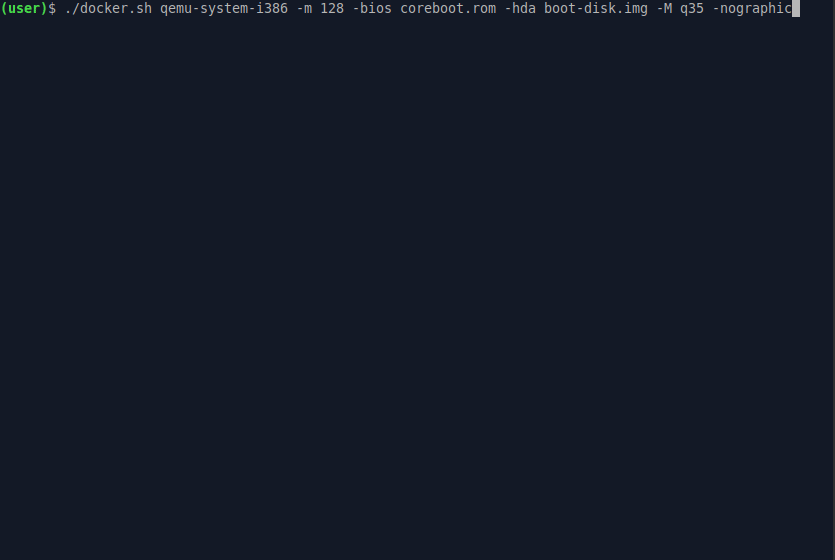Based on the ile-cli project.
RTEMS (Real-Time Executive for Multiprocessor Systems 1,2,3) is a real-time operating system kernel used around the world and in space. RTEMS is a free real-time operating system (RTOS) designed for deeply embedded systems such as automobile electronics, robotic controllers, and on-board satellite instruments.
This example is the result of a study of this RTOS. I was interested in learning how to build an image and create applications for it. At the moment, this project is used as a base for creating embedded controller applications based on x86 CPU and ARM-microcontrollers.
Perhaps this work will be interesting to someone and you will use this knowledge to create your own systems.
Use the following packages to build the project on Ubuntu:
sudo apt-get build-dep build-essential gcc-defaults g++ gdb git \
unzip pax bison flex texinfo unzip python3-dev libpython-dev \
libncurses5-dev zlib1g-dev wget
or use Docker:
./docker.sh [CONSOLE COMMANDS...]
./docker.sh ./build.sh help
Make some preparations once before start the building process:
git clone https://github.com/maxpoliak/rtems-ec-cli.git && ./rtems-ec-cli/preparations.sh
Print the help to see all available commands:
./build.sh help
Use ./build.sh [COMMANDS...]
all Build all: cross-compiler, RTEMS OS and ile-cli application
rtems Build RTEMS OS
cross Build cross-compiler
cleanall Clear all
rebuild Set rebuild flag
Delete the application's object files before building it
help Print help
For the first build, use the build script with the "-a" or "all" option to build all components of the project. As a result, you will build a cross compiler, RTEMS OS and the ile-cli application itself.
./build.sh all
Build the application only, without rebuilding tools and RTEMS OS:
./build.sh
The Waf build system (4,5) is used for the output executable file of the application.
Test the result in QEMU using the script:
./run.sh
The next step is to load the RTEMS and EC-CLI application from an external disk to QEMU. To do this, you need to create a virtual image of the boot disk, install grub on it and copy the exe file. You can do all this with create-boot-image.sh:
dd if=/dev/zero of=boot-disk.img bs=512 count=32130
sudo ./ci/ci-create-boot-image.sh --file boot-disk.img
After that you can test the result in QEMU:
qemu-system-i386 -m 128 -hda boot-disk.img -M q35 -nographic
The main and most interesting task of this project is to run the application on real hardware. This task can be solved without any problems if you (like us) use coreboot as BIOS and seabios as a payload in your x86 embedded systems. Let's test this by building coreboot + seabios image for the "QEMU x86 q35/ich9" machine and run it in QEMU with the virtual disk created at the previous stage:
qemu-system-i386 -m 128 -bios coreboot.rom -hda boot-disk.img -M q35 -nographic
You can also build coreboot for your board and run real-time applications on it.
TODO: Try using ACRN hypervisor to run RTEMS with the Linux kernel

